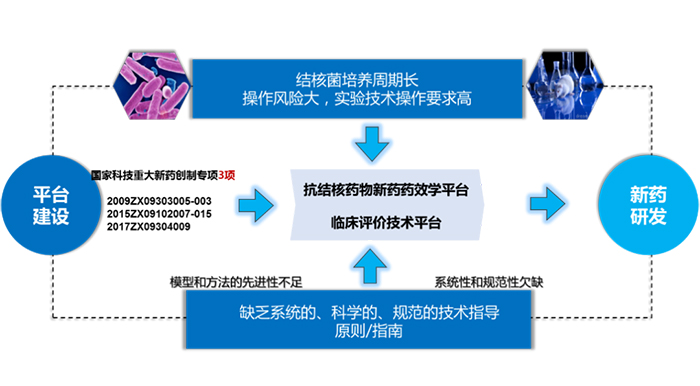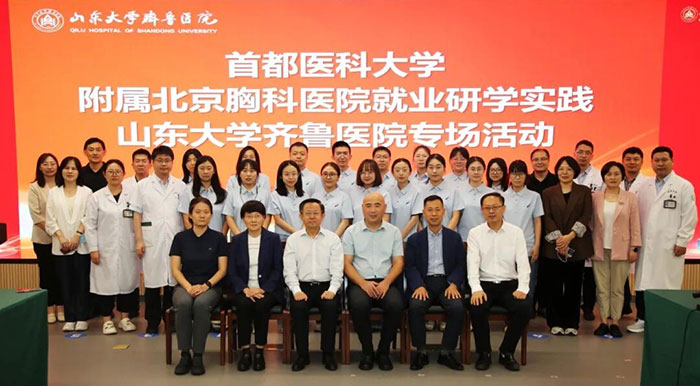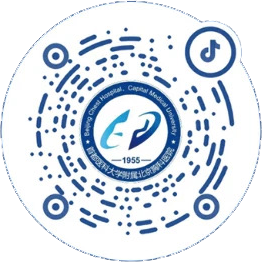2025年
No.6
PubMed
(tuberculosis[Title/Abstract]) OR (lung cancer[Title/Abstract])
Filters applied: from 2025/6/1 - 2025/6/30.
1. Nat Rev Clin Oncol. 2025 Jun 17. doi: 10.1038/s41571-025-01035-9. Online ahead of print.
The next generation of immunotherapies for lung cancers.
Immunotherapies, specifically immune-checkpoint inhibitors (ICIs) targeting PD-(L)1 or CTLA4, have revolutionized the treatment of lung cancer; however, many patients do not have a response to ICIs and most of those with an initial tumour response eventually have disease progression owing to acquired resistance. Over the past few years, numerous therapeutic strategies have been explored to address the problems of intrinsic and acquired resistance to ICIs. In 2024, regulatory approvals of the bispecific PD-1 × VEGF antibody ivonescimab for the treatment of non-small-cell lung cancer in China and the bispecific DLL3 × CD3 T cell engager tarlatamab for patients with small cell lung cancer in the USA provided clinical proof-of-concept for overcoming the challenge of ICI resistance using novel immunotherapeutic agents, thereby increasing enthusiasm for the exploration of next-generation immunotherapies for lung cancer. A large variety of immunotherapies with diverse targets and mechanisms of action are currently being tested in clinical trials involving patients with lung cancer. In this Review, we provide an overview of these emerging immunotherapies in clinical development for non-small-cell lung cancer and/or small cell lung cancer, including novel immune-checkpoint modulators, immune cell engagers, adoptive cell therapies and therapeutic cancer vaccines. We describe the designs of these agents and the mechanisms by which they might overcome resistance to the current generation of ICIs. We also discuss hurdles impeding the clinical translation of each immunotherapeutic modality and potential strategies to address these challenges, using representative examples of agents that have entered the later phases of clinical testing.
PMID: 40528044
2. J Thorac Oncol. 2025 Jun 3: S1556-0864(25)00754-3. doi:10.1016/j.jtho.2025.05.024. Online ahead of print.
Advances in Lung Cancer Basic and Translational Research in 2025 - Overview and Perspectives Focusing on NSCLC.
Basic and translational research in lung cancer is a rapidly evolving field with a transformational impact on early detection, diagnosis, therapeutic development, and personalization of care. Recent advances have greatly increased our understanding of the molecular genomics, proteomics, pathogenesis, and cellular biology of this deadly malignancy. The International Association for the Study of Lung Cancer (IASLC) recently formed a Basic and Translational Science (BaTS) Committee to further enhance the scientific leadership of IASLC in thoracic cancer research. This review by members of the committee highlights the breadth of current research in NSCLC, with a focus on molecular risk factors and processes in tumorigenesis, heterogeneity, phenotypic plasticity, metabolic reprogramming, immunobiology, the immune microenvironment, and microbiome. This review also identifies future research areas that may lead to further improvement in survival outcomes and curative therapies especially for patients with advanced NSCLC.
PMID: 40473107
3. Lancet Glob Health. 2025 Jun;13(6):e1020-e1029. doi:10.1016/S2214-109X(25)00105-6.
Post-pulmonary tuberculosis lung function: a systematic review and meta-analysis.
BACKGROUND: Although post-tuberculosis lung disease poses a substantial threat to individuals who have recovered from pulmonary tuberculosis, data showing objective functional impairment in such people are scarce. We did a systematic review and meta-analysis to estimate respiratory impairment after pulmonary tuberculosis disease and examine differences in ventilatory defects.
METHODS: We systematically searched Embase, MEDLINE, and CINAHL from Jan 1, 2000, to Dec 13, 2024. We included any study design with data on lung function tests in individuals with a previous diagnosis of pulmonary tuberculosis versus healthy controls. Outcomes extracted from eligible studies included forced expiratory volume in 1 s (FEV1), forced vital capacity (FVC), FEV1 as a percentage of the predicted value (FEV1%), FVC as a percentage of the predicted value (FVC%), and FEV1/FVC ratio. Pre-bronchodilator values were preferentially selected. Random effects mean difference models were used when possible and standardised mean difference where it was necessary to standardise to a single scale (ie, FEV1%, FVC%, and FEV1/FVC ratio). Between-study heterogeneity was estimated with I2. This study was prospectively registered with PROSPERO (CRD42021248838).
FINDINGS: Of the 5594 publications found, data from 19 studies were included for meta-analyses, reporting on 75 960 individuals of whom 7447 had past pulmonary tuberculosis. All studies reporting absolute values, using various levels of adjustment or standardisation, showed that previous pulmonary tuberculosis had a negative effect across all spirometric values: FEV1 -0·41 L (95% CI -0·51 to -0·32, I2=90·4%), FVC -0·25 L (-0·33 to -0·17, I2=80·6%), and FEV1/FVC ratio -0·37 (-0·54 to -0·19, I2=92·0%). In those studies, using reference values to derive FEV1% and FVC %, prior pulmonary tuberculosis had a pooled standardised mean difference of -0·44 (-0·60 to -0·28, I2=95·6%) and -0·33 (-0·54 to -0·13, I2=91·3%), respectively, compared with controls.
INTERPRETATION: People who recover from pulmonary tuberculosis have significantly decreased lung function compared with controls, with FEV1 more affected than FVC, giving a mixed obstructive and restrictive picture with predominantly airflow obstruction.
FUNDING: Breathing Matters.
PMID: 40412395 [Indexed for MEDLINE]
4. Immunity. 2025 Jun 10;58(6):1586-1597.e5. doi: 10.1016/j.immuni.2025.05.004. Epub 2025 May 30.
Antibody-Fab and -Fc features promote Mycobacterium tuberculosis restriction.
Update of
bioRxiv. 2024 Oct 11:2024.10.07.617070. doi: 10.1101/2024.10.07.617070.
Mycobacterium tuberculosis, the causative agent of tuberculosis (TB), a leading cause of death by an infectious disease globally, has no efficacious vaccine. Antibodies are implicated in M. tuberculosis control, but the mechanisms of action remain poorly understood. We assembled a library of monoclonal antibodies (mAb) and screened for M. tuberculosis-restrictive activity in mice,identifying protective antibodies targeting diverse antigens. To dissect the mechanism of mAb-mediated M. tuberculosis restriction, we optimized a protective lipoarabinomannan-specific mAb, generating Fc variants. In vivo analysis of these Fc variants revealed a role for Fc-effector function in M. tuberculosis restriction. Restrictive Fc variants altered distribution of M.tuberculosis across innate immune cells. Single-cell transcriptomics highlighted distinctly activated pathways within innate immune cell subpopulations, identifying early activation of neutrophils as a key signature of mAb-mediated M. tuberculosis restriction. Therefore, antibody-mediated restriction of M. tuberculosis is associated with reorganization of the tissue-level immune response to infection and depends on the collaboration of antibody Fab and Fc.
PMID: 40449485 [Indexed for MEDLINE]
5. Nat Rev Clin Oncol. 2025 Jun 9. doi: 10.1038/s41571-025-01029-7. Online ahead of print.
Rechallenge with immune-checkpoint inhibitors in patients with advanced-stage lung cancer.
Lung cancer remains the leading cause of cancer-related mortality globally, with many patients diagnosed with advanced-stage disease. Treatment in this setting relies on systemic therapies, including chemotherapy, targeted therapy and immunotherapy. Immune-checkpoint inhibitors (ICIs), which promote or restore antitumour immunity by inhibiting immunosuppressive signalling pathways, are currently the most widely used immunotherapies in these patients. However, immune-related adverse events (irAEs) or disease progression often necessitate discontinuation of these agents, leaving many patients with limited subsequent treatment options. In this scenario, ICI rechallenge has emerged as a potential strategy. Despite this potential, evidence for ICI rechallenge after either disease progression or irAEs in patients with non-small-cell lung cancer is limited and evidence for those with small cell lung cancer seems to be non-existent. In this Review, we provide a comprehensive overview of the available data on ICI rechallenge in the context of both disease progression and irAEs, including a summary of current guidance on clinical management and detailed discussions of safety and efficacy. We also highlight important unanswered questions in an attempt to guide future research in this area.
PMID: 40490476
6. Nat Rev Microbiol. 2025 Jun 30. doi: 10.1038/s41579-025-01201-x. Online ahead of print.
Mycobacterium tuberculosis biology, pathogenicity and interaction with the host.
Since the release of the first Mycobacterium tuberculosis genome in 1998, major advances have been made in understanding the biology of this pathogen, the leading infectious cause of death in modern human history. In this Review, we outline the physiological and metabolic features thought to underpin the survival, evasion and subversion strategies employed by M. tuberculosis as it drives a cycle of transmission, infection and disease in its obligate human host. We also consider adaptations to key host innate immune effectors, including the roles of granulocytes, phagosomal damage and repair, autophagy and cell death in determining host-mycobacterium outcomes. Given the increasing awareness of the importance of asymptomatic M. tuberculosis infection and transmission, we advocate for the need to ensure greater intersection between laboratory and clinical research, taking into account the environmental context in which natural infection and disease occur. We identify knowledge gaps in the field and reflect on the opportunities and challenges for integrating host, bacterium and environment into future investigations to inform intervention strategies to control tuberculosis disease.
PMID: 40588584
7. Lancet Microbe. 2025 Jun;6(6):100963. doi: 10.1016/j.lanmic.2024.100963. Epub 2024 Nov 11.
Performance of stool-based molecular tests and processing methods for paediatric tuberculosis diagnosis: a systematic review and meta-analysis.
BACKGROUND: There has been a global pursuit to improve the diagnosis of tuberculosis in young children by applying diagnostic methods on accessible biospecimens such as stool. We aimed to conduct a systematic review on the accuracy of stool-based molecular tests for tuberculosis diagnosis in children and to assess the impact of the available pre-processing methods and other design characteristics.
METHODS: In this systematic review and meta-analysis, we evaluated studies in children younger than 16 years with presumptive tuberculosis that were published in English, Spanish, French, and Portuguese from Jan 1, 2000, to May 3, 2024, in MEDLINE, Embase, and Embase Classic, comparing the molecular detection of Mycobacterium tuberculosis DNA in stool with microbiological tests on other samples or a clinical diagnosis. We did not exclude studies based on geographical location, sample size, or study design if they were reporting primary data. Two independent reviewers (LC-C and SM) screened titles, abstracts, and full-text articles for eligibility and extracted data on study characteristics, study population, and diagnostic performance. If information relevant to the main analysis was not reported in the article, the corresponding authors were contacted. Point estimates and 95% CIs were calculated for sensitivity and specificity for each study and for the different molecular tests (Xpert MTB/RIF, Xpert Ultra MTB/RIF [Cepheid, Sunnyvale, CA, USA], and other tests) versus a reference standard (culture only, any bacteriological confirmation, and tuberculosis case definition). Sensitivity and specificity were stratified by the stool processing method. We also quantified the additionality of stool Xpert Ultra tests for tuberculosis bacteriological confirmation. The protocol was registered with PROSPERO, CRD42022341514.
FINDINGS: A total of 4521 records were identified through the database search, one record was identified from an article bibliography, and 67 studies were retained for full-text reading. 39 studies were included in the qualitative synthesis, 35 of which were included in the meta-analyses. When using any bacteriological confirmation from a respiratory sample as the reference standard, stool Xpert sensitivity was 0·60 (95% CI 0·48-0·71), stool Xpert Ultra sensitivity was 0·73 (0·63-0·81), and sensitivity was 0·44 (0·29-0·60) for other in-house molecular methods combined. When using tuberculosis case definition as the reference standard, stool Xpert sensitivity was 0·23 (0·11-0·41), stool Xpert Ultra sensitivity was 0·38 (0·22-0·56), and sensitivity was 0·17 (0·09-0·23) for other in-house molecular methods. The addition of stool Xpert Ultra increased bacteriological confirmation of tuberculosis by 38·6% overall. Further, the utilisation of centrifuge-free simplified methods improved the sensitivity of stool Xpert Ultra when using any bacteriological confirmation as a reference standard (0·77 [0·66-0·85] for centrifuge-free methods vs 0·61 [0·41-0·78] for non-centrifuge-free methods).
INTERPRETATION: This systematic review and meta-analysis supports the use of Xpert Ultra in stool samples as a diagnostic tool for paediatric tuberculosis diagnosis. Stool-based Xpert Ultra can contribute to increase the bacteriological confirmation in this population, even when respiratory specimens are also tested.
FUNDING: The EDCTP2 programme supported by the EU via Stool4TB Project and the European Society of Pediatric Infectious Diseases.
PMID: 39547244 [Indexed for MEDLINE]
8. Nature. 2025 Jun 18. doi: 10.1038/s41586-025-09177-7. Online ahead of print.
Targeting de novo purine biosynthesis for tuberculosis treatment.
Tuberculosis remains the leading cause of death from an infectious disease1,2. Here we report the discovery of a first-in-class small-molecule inhibitor targeting PurF, the first enzyme in the mycobacterial de novo purine biosynthesis pathway. The lead candidate, JNJ-6640, exhibited nanomolar bactericidal activity in vitro. Comprehensive genetic and biochemical approaches confirmed that JNJ-6640 was highly selective for mycobacterial PurF. Single-cell-level microscopy demonstrated a downstream effect on DNA replication. We determined the physiologically relevant concentrations of nucleobases in human and mouse lung tissue, showing that these levels were insufficient to salvage PurF inhibition. Indeed, proof-of-concept studies using a long-acting injectable formulation demonstrated the in vivo efficacy of the compound. Finally, we show that inclusion of JNJ-6640 could have a crucial role in improving current treatment regimens for drug-resistant tuberculosis. Together, we demonstrate that JNJ-6640 is a promising chemical lead and that targeting de novo purine biosynthesis represents a novel strategy for tuberculosis drug development.
PMID: 40533558
9. Nat Rev Immunol. 2025 Jun 13. doi: 10.1038/s41577-025-01192-z. Online ahead of print.
Finding and filling the knowledge gaps in mechanisms of T cell-mediated TB immunity to inform vaccine design.
Mycobacterium tuberculosis, the bacterium that causes tuberculosis (TB), results in more human mortality than any other single pathogen, in part because of the lack of an effective vaccine. Although T cells are essential for immunity to TB, the mechanisms that provide protective immunity are poorly understood. In this Review, we describe current gaps in our knowledge about T cell-mediated immune responses to M. tuberculosis and discuss how recent technologies, including multiphoton intravital microscopy, spatial multiomics and high-resolution in vivo analyses of cell-cell interactions, may be used to gain insights that can inform the design of T cell-targeted TB vaccines.
PMID: 40514544
10. Lancet Infect Dis. 2025 Jun 27:S1473-3099(25)00305-6. doi:10.1016/S1473-3099(25)00305-6. Online ahead of print.
The participation of people deprived of liberty in tuberculosis vaccine trials: should they be protected from research, or through research?
People deprived of liberty are among the populations experiencing the highest rates of tuberculosis. Prisons typically create ideal conditions for Mycobacterium tuberculosis transmission, including overcrowding and prolonged exposure in poorly ventilated environments, and often have populations at high risk of developing disease. The development of a novel, effective tuberculosis vaccine to prevent adult pulmonary tuberculosis is considered a crucial objective for improving tuberculosis control and, ultimately, elimination. Currently, there are over a dozen vaccines in clinical development, although none of the ongoing or planned trials include people deprived of liberty. Several factors contribute to this exclusion, including historical ethical violations in medical research involving this population, as well as concerns regarding coercion and exploitation. In this Personal View, we contend that these concerns need to be weighed against people deprived of liberty's right to participate in scientific progress and the importance of respecting their autonomy to be part of medical research. We address the key risks associated with conducting tuberculosis vaccine trials involving people deprived of liberty, propose mitigation strategies, and discuss important scientific considerations related to efficacy trials in this context.
PMID: 40587989
11. J Clin Invest. 2025 Jun 24: e191070. doi: 10.1172/JCI191070. Online ahead of print.
Lung adenocarcinoma-derived IFN-γ promotes growth by modulating CD8+ T cell production of CCR5 chemokines.
Since the lung is a mucosal barrier organ with a unique immunologic environment, mechanisms of immunoregulation in lung cancer may differ from those of other malignancies. Consistent with this notion, we found that CD8+ T cells play a paradoxical role in facilitating, rather than ameliorating, the growth of multiple lung adenocarcinoma models. These include spontaneous, carcinogen-induced, and transplantable tumor cell line models. Specifically, we found that CD8+ T cells promote homing of CD4+Foxp3+ T regulatory cells to the tumor bed by increasing levels of CCR5 chemokines in the tumor microenvironment in an IFN-γ and TNF-α dependent manner. Contrary to their canonical role, these Th1 cytokines contributed to accelerated growth of murine lung adenocarcinomas while suppressing the growth of other malignancies. Surprisingly, lung cancer cells themselves can serve as a dominant source of IFN-γ, and deletion of this cytokine from cancer cells using CRISPR/Cas-9 decreases tumor growth. Importantly for translational applications, a high level of IFN-γ was also found in human lung cancer patients at both the mRNA and protein level. Our data outlines what we deem a novel and previously undefined lung cancer specific immunoregulatory pathway that may be harnessed to tailor immune based therapy specifically for this malignancy.
PMID: 40553564
12. Lancet Infect Dis. 2025 Jun 18:S1473-3099(25)00218-X. doi:10.1016/S1473-3099(25)00218-X. Online ahead of print.
Treatment outcomes of bedaquiline-resistant tuberculosis: a retrospective and matched cohort study.
Update of
medRxiv. 2025 Jan 22:2025.01.21.25320876. doi: 10.1101/2025.01.21.25320876.
BACKGROUND: Rising prevalence of bedaquiline resistance undermines benefits from this life-saving drug for rifampicin-resistant tuberculosis (RR tuberculosis). Despite increasing awareness, patient-level outcomes for bedaquiline-resistant tuberculosis have not been well characterised and case management has been poorly defined.
METHODS: We did a retrospective cohort study of bedaquiline-resistant tuberculosis with matched RR tuberculosis controls at a tuberculosis referral hospital in East London, South Africa. Cases included patients aged 13 years or older with a phenotypic bedaquiline-resistant Mycobacterium tuberculosis isolate identified between Jan 1, 2018 and June 30, 2023. Controls with confirmed bedaquiline-susceptible tuberculosis, matched 1:1 by baseline culture status, age, and HIV status, were selected from a prospective observational study conducted during an overlapping period at the same facility. Primary outcomes included time to sputum culture conversion (SCC), a modified WHO-defined unfavourable outcome, and tuberculosis-free survival (alive, with SCC, and in care or treatment completed) up until 18 months. Adjusted analyses used Cox proportional hazards and logistic regression models.
FINDINGS: 82 patients with bedaquiline-resistant tuberculosis were included, 57 (70%) of whom were HIV positive. Bedaquiline was prescribed for 72 (88%) of 82 patients and meropenem (plus amoxicillin-clavulanate) for 32 (39%) of 82. Together with bedaquiline, the most frequently prescribed drugs included clofazimine, linezolid, and terizidone. Median time to SCC after treatment initiation was 175 days (IQR 100-254) in the bedaquiline-resistant cohort and 32 days (30-42) in matched controls. In the analysis of the combined cohorts,bedaquiline resistance (adjusted hazard ratio 0·03, 95% CI 0·0023 0·29, p=0·003) was associated with longer time to SCC when adjusted for baseline microscopy grade and baseline fluoroquinolone resistance. WHO treatment outcomes in those with bedaquiline-resistant tuberculosis were unfavourable in 54 (67%) of 81 patients, driven by treatment failure in 35 (43%) of 81. At 18 months, 43 (52%) of 82 patients had reached tuberculosis-free survival, 19 (23%) of 82 had died, and 50 (79%) of 63 survivors were still on treatment.
INTERPRETATION: Current treatment options for bedaquiline-resistant tuberculosis result in prolonged therapy, delayed microbiological responses, and poor clinical outcomes. Implementation of more rapid resistance testing, including targeted next-generation sequencing, and access to novel treatment options within randomised controlled trials for bedaquiline-resistant tuberculosis, are priorities for tuberculosis programmes.
FUNDING: The South African Medical Research Council.
PMID: 40543523
13. J Thorac Oncol. 2025 Jun;20(6):714-724. doi: 10.1016/j.jtho.2025.01.024. Epub 2025 Jan 30.
Barriers to Lung Cancer Screening in a Multi-Disciplinary Thoracic Oncology Program Cohort: Effects of an Incidental Pulmonary Nodule Program.
INTRODUCTION: Lung cancer screening (LCS) reduces mortality; nevertheless, its adoption has been slow, and some people who develop lung cancer are ineligible. Incidental pulmonary nodule (IPN) programs can also detect lung cancer early. We quantified the barriers to LCS and the impact of the IPN program.
METHODS: We categorized patients with lung cancer enrolled in a Multidisciplinary Thoracic Oncology Program from 2015 to 2023 as screened, unscreened, eligible, or ineligible for LCS. We further categorized the unscreened cohorts according to their exposure to IPN programs. We compared the lung cancer outcomes between the groups.
RESULTS: Of the 1904 patients, 6.4%, 41.4%, and 52.2% were screened, eligible unscreened, and ineligible, respectively; 42% of the eligible unscreened (17% of the whole cohort) and 46% of the ineligible cohort (24% of the whole cohort) were diagnosed through the IPN program. Thirty-three percent of the eligible unscreened non-IPN cohort had clinical encounters 12 to 36 months before diagnosis. Among the ineligible participants, 28% were age-ineligible, 20% had never smoked, 20.5% had a less than 20-pack-year history, and 32.5% had an excessive quitting duration. The five-year overall survival rates were 77% (95% confidence interval: 73-89), 45% (41-49), and 50% (46-54), respectively (p <0.0001). With the eligible unscreened as a reference, the adjusted hazard ratios were 0.36 (0.23-0.54) and 0.87 (0.75-1.01) for the screened and ineligible cohorts. Five-year overall survival was 61% (55-68) versus 35% (30-39) and 60% (55-67) versus 42% (37-47) among IPN versus non-IPN cohorts of eligible unscreened and ineligible cohorts, respectively.
CONCLUSIONS: Screening improved the survival in this community-based cohort. The eligibility criteria excluded more patients than the failure to screen eligible patients. The IPN program alleviated both barriers.
PMID: 39892668 [Indexed for MEDLINE]
14. Adv Sci (Weinh). 2025 Jun;12(22):e2416921. doi: 10.1002/advs.202416921. Epub 2025 Apr 15.
Single-Cell Sequencing-Guided Annotation of Rare Tumor Cells for Deep Learning-Based Cytopathologic Diagnosis of Early Lung Cancer.
Deep learning (DL) models for medical image analysis are majorly bottlenecked by the lack of well-annotated datasets. Bronchoalveolar lavage (BAL) is a minimally invasive procedure to diagnose lung cancer, but BAL cytology suffers from low sensitivity. The success of DL in BAL cytology is rare due to the rarity of exfoliated tumor cells (ETCs) and their subtle morphological differences from normal cells. Single-cell DNA sequencing (scDNA-Seq) is utilized as an objective ground truth of ETC annotation for generating an unbiased,accurately annotated dataset comprising 580 ETCs and 1106 benign cells from BAL cytology slides. A DL model is developed, to distinguish ETC from benign cells in BAL fluid, achieving an Area Under the Curve of 0.997 and 0.956 for detecting large- and small-sized ETCs, respectively. The model is applied in a discovery cohort (n = 156) to establish BAL-based cytopathologic diagnostic model for lung cancer. The model is evaluated in a validation cohort (n = 158), and yielded 47.6% sensitivity and 97.7% specificity in lung cancer diagnosis, outperforming cytology with improved sensitivity (47.6% vs 19.0%). In an external validation cohort (n=141), the model achieved 60.0% sensitivity and 92.5% specificity in lung cancer diagnosis.
PMID: 40231585 [Indexed for MEDLINE]
.
15. Cell Stem Cell. 2025 Jun 6:S1934-5909(25)00191-2. doi:10.1016/j.stem.2025.05.011. Online ahead of print.
An organoid co-culture model for probing systemic anti-tumor immunity in lung cancer.
Deciphering interactions between tumor micro- and systemic immune macroenvironments is essential for developing more effective cancer diagnosis and therapeutic strategies. Here, we established a gel-liquid interface (GLI) co-culture model of lung cancer organoids (LCOs) and paired peripheral-blood mononuclear cells (PBMCs), featuring enhanced interactions between immune cells and tumor organoids for optimized simulation of in vivo systemic anti-tumor immunity. By constructing a cohort of lung cancer patients, we demonstrated that the responses of GLI models under αPD1 treatment reflected the immunotherapy outcomes of the corresponding patients precisely. Furthermore, we dissected the various tumor immune processes mediated by PBMC-derived T cells within GLI models through functional multi-omics analyses, along with the characterization of circulating tumor-reactive T cells (GNLY+CD44+CD9+) with effector memory-like phenotypes as a potential indicator of immunotherapy efficacy. Our findings indicate that the GLI co-culture model can be used to develop diagnostic strategies for precision immunotherapies, as well as understanding the underlying mechanisms.
PMID: 40513558
16. Drug Resist Updat. 2025 Jun 9;82:101266. doi: 10.1016/j.drup.2025.101266. Online ahead of print.
Molecular mechanisms of acquired resistance to EGFR tyrosine kinase inhibitors in non-small cell lung cancer.
Tyrosine kinase inhibitors (TKIs) have revolutionized the management of epidermal growth factor receptor (EGFR)-mutant non-small cell lung cancer (NSCLC). Despite the initially favorable outcomes, these patients inevitably acquire resistance to EGFR-TKIs. The molecular mechanism of the acquired resistance is highly complex and heterogeneous, and can be generalized as three categories, including EGFR pathway reactivation (re-engagement of EGFR downstream), EGFR pathway bypass (adoption of a parallel pathway to re-engage the downstream transcriptional oncogenic output of the original EGFR), and EGFR pathway indifference (acquirement of a cellular state alternate to the original EGFR-driven output). This review summarizes the recent progress on the identification and understanding of the acquired resistance mechanisms to EGFR-TKIs in patients with NSCLC. The potential strategies to delay or overcome the acquired resistance are also discussed.
PMID: 40505315
17. Pharmacol Ther. 2025 Jun 4;273:108893. doi: 10.1016/j.pharmthera.2025.108893. Online ahead of print.
Targeting myeloid cell immunometabolism to improve current non-small cell lung cancer therapies.
Although recent advancements in immunotherapy have improved clinical outcomes, non-small cell lung cancer (NSCLC) is still the deadliest cancer type, as current treatments fail in many patients. This highlights a need for continued studies on this complex and multifaceted malignancy. The lung tumor microenvironment (TME) is marked by an infiltration of innate immune cells of the myeloid lineage, including macrophages and neutrophils, which affect patient outcomes. These cells induce inflammation and functional responses that can both promote and inhibit tumor growth and progression, with these functions being directly linked to their intracellular metabolism. The lung TME provides a milieu of signals, including cytokines and metabolites, that induce metabolic reprogramming in tumor-associated myeloid cells. Here, we review the present understanding of tumor-associated myeloid cell metabolism specifically in the context of NSCLC. Recent studies demonstrated that some metabolic pathways have the potential to be manipulated pharmacologically to eliminate or reprogram pathogenic, pro-tumor, and/or immunosuppressive myeloid cells to anti-tumor states for NSCLC therapies. Therefore, we highlight and propose potential metabolic targets in these myeloid cells, focusing on macrophages and neutrophils. These cells have direct roles in affecting subsequent responses of adaptive cells and their cellular metabolism must be further investigated to identify potential pharmacologic therapeutic targets. Targeting myeloid cell metabolism in the TME may be used in combination with the current regimen of immune checkpoint inhibition (ICI) and chemotherapy to improve outcomes for lung cancer patients.
PMID: 40480442
18. Bioact Mater. 2025 Jun 10;52:182-199. doi: 10.1016/j.bioactmat.2025.06.008. eCollection 2025 Oct.
Near-infrared light-induced photothermal and immunotherapy system for lung cancer bone metastasis treatment with simultaneous bone repair.
Approximately half of lung cancer patients experience bone metastasis, leading to bone loss, fracture, and other skeletal-related events. Although immunotherapies have significantly advanced the therapeutic landscape for lung cancer, bone metastases have an immunologically "cold" microenvironment, representing a challenging obstacle when treating lung cancer. The combination of immunotherapy and photothermal therapy (PTT) for treating tumor-induced bone defects holds promise for enhancing the efficacy of local tumor ablation and inhibiting tumor recurrence and metastasis through activating systemic immune responses. Herein, we developed an injectable hydrogel-based photothermal immunotherapy system (BP@Gel-CD[SA] hydrogel) incorporating STING agonists (SA) and black phosphorus nanosheets (BPNSs) for high-efficiency tumor elimination, immune activation, and bone regeneration. The photothermal and photodynamic activities of BPNSs induce hyperthermia and ROS-mediated apoptosis of tumor cells. Meanwhile, SA loaded into the nano-boxes in BP@Gel-CD[SA] hydrogel by host-guest interaction significantly activates the cGas-STING pathway. It stimulates immunogenic cell death (ICD), synergisticallypromoting immune cell infiltration. Single-cell RNA sequence analysis confirms the modulation of the tumor microenvironment (TME) through the PTT-mediated ICD effect and the transactivation of the cGAS-STING pathway in immune cells of the TME. More importantly, the system can significantly inhibit the growth of distant tumors via systemic immune activation and elicit long-term immune memory in addition to tumor eradication. In the long term, this hydrogel system can promote the formation of new bone at sites of tumor-induced bone destruction, improving bone strength in the affected area. Collectively, this strategy provides an effective and safe option for treating lung cancer bone metastases.
PMID: 40538765
19. J Clin Invest. 2025 Jun 3:e177310. doi: 10.1172/JCI177310. Online ahead of print.
Tumor microenvironment of non-small cell lung cancer impairs immune cell function among people with HIV.
Lung cancer is the leading cause of cancer mortality among people with HIV (PWH), with increased incidence and poor outcomes. This study explored whether the tumor microenvironment (TME) of HIV-associated non-small cell lung cancer (NSCLC) limits tumor-specific immune responses. With a matched cohort of NSCLC from PWH and people without HIV (PWOH), we used imaging mass cytometry, linear mixed effects model and AI-based pageRank mathematical algorithm based on spectral graph theory to demonstrate that HIV-associated tumors demonstrate differential distribution of tumor infiltrating CD8+ and CD4+ T cells, enriched for the expression of PD-1 and Lag-3, as well as activation and proliferation markers. We also demonstrate higher expression of immunoregulatory molecules (PD-L1, PD-L2, B7-H3, B7-H4, IDO1 and VISTA), among tumor-associated macrophages. Discrimination of cells between tumors from PWH versus PWOH was confirmed by spectral graph theory with 84.6% accuracy. Furthermore, we noted differences in spatial orientation of immune cells within the TME of PWH compared to PWOH. Additionally, cells from PWH, compared to PWOH, exhibited decreased tumor killing when exposed to HLA-matched NSCLC cell lines. In conclusion, our study demonstrates that the HIV-associated tumor microenvironment sustains a unique immune landscape, with evidence of immune cells with enhanced immunoregulatory phenotypes and impaired anti-tumor responses, with implications for response to immune checkpoint blocker therapies.
PMID: 40459946
20. Adv Sci (Weinh). 2025 Jun 23:e03322. doi: 10.1002/advs.202503322. Online ahead of print.
Splicing Shift of RAC1 Accelerates Tumorigenesis and Defines a Potent Therapeutic Target in Lung Cancer.
Dysregulated RNA splicing has emerged as a pervasive yet understudied feature of cancer. The small GTPase RAC1 undergoes splicing changes in multiple cancers. However, the in vivo functional disparities between the two major RAC1 isoforms, RAC1B and the canonical RAC1A, and their therapeutic implications in cancer remain largely unexplored. Here, RAC1B is found to be significantly upregulated in lung adenocarcinoma (LUAD) patients, particularly in those harboring EGFR mutations. Through isoform-specific overexpression and depletion assays in murine and cellular models of EGFR-mutant LUAD, it is revealed that RAC1B, but not RAC1A, promotes LUAD cell proliferation and tumor growth. Mechanistically, RAC1B stabilizes EGFR by inhibiting its lysosome trafficking and degradation. This function is mediated by the specific binding of RAC1B to the guanine nucleotide exchange factor GDS1, which activates RAC1B. The splicing factor RBM10 which is frequently mutated in LUAD is further identified as a negative regulator of RAC1B. Importantly, utilizing LUAD patient-derived organoid and xenograft models, it is demonstrated that targeting RAC1B potently suppresses tumor growth and enhances the efficacy of EGFR inhibitors. Together, the findings delineate functional differences and underlying mechanisms of RAC1 isoforms in LUAD tumorigenesis, highlighting a promising therapeutic route via targeting RAC1B for lung cancer.
PMID: 40548642
21. N Engl J Med. 2025 Jun 2. doi: 10.1056/NEJMoa2502099. Online ahead of print.
Tarlatamab in Small-Cell Lung Cancer after Platinum-Based Chemotherapy.
BACKGROUND: Tarlatamab, a bispecific delta-like ligand 3-directed T-cell engager immunotherapy, received accelerated approval for the treatment of patients with previously treated small-cell lung cancer. Whether tarlatamab is more effective than chemotherapy in the treatment of patients whose small-cell lung cancer has progressed during or after initial platinum-based chemotherapy is not known.
METHODS: We conducted a multinational, phase 3, open-label trial to compare tarlatamab with chemotherapy as second-line treatment in patients with small-cell lung cancer whose disease had progressed during or after platinum-based chemotherapy. Patients were randomly assigned to receive tarlatamab or chemotherapy (topotecan, lurbinectedin, or amrubicin). The primary end point was overall survival. Key secondary end points were investigator-assessed progression-free survival and patient-reported outcomes. Results of the prespecified interim analysis (data-cutoff date, January 29, 2025) are reported.
RESULTS: A total of 509 patients were randomly assigned to receive tarlatamab (254 patients) or chemotherapy (255 patients). Treatment with tarlatamab resulted in significantly longer overall survival than chemotherapy (median, 13.6 months [95% confidence interval {CI}, 11.1 to not reached] vs. 8.3 months [95% CI, 7.0 to 10.2]; stratified hazard ratio for death, 0.60; 95% CI, 0.47 to 0.77; P<0.001). Tarlatamab treatment also had a significant benefit with respect to progression-free survival and cancer-related dyspnea and cough as compared with chemotherapy. The incidence of adverse events of grade 3 or higher was lower with tarlatamab than with chemotherapy (54% vs. 80%), as was the incidence of adverse events resulting in treatment discontinuation (5% vs. 12%).
CONCLUSIONS: Treatment with tarlatamab led to longer overall survival than chemotherapy among patients with small-cell lung cancer whose disease had progressed during or after platinum-based chemotherapy. (Funded by Amgen; DeLLphi-304 ClinicalTrials.gov number, NCT05740566.).
PMID: 40454646
22. Nat Cancer. 2025 Jun;6(6):938-953. doi: 10.1038/s43018-025-00996-1. Epub 2025 Jun 16.
Advancing therapeutics in small-cell lung cancer.
Small-cell lung cancer (SCLC) accounts for 10-15% of lung cancers and is characterized by early metastasis, treatment resistance and rapid progression. Treatment advancements have been stagnant for decades, with chemotherapy as the mainstay and immune checkpoint inhibitors offering only modest survival extensions. However, new insights into tumor heterogeneity and recent practice-changing observations such as the identification of targetable cell surface proteins could effectively transform SCLC therapy. In this Review, we highlight key advances in SCLC biology, therapeutic innovation and biomarker development. Finally, we discuss the role of reverse translation in optimizing treatments, approaches to overcoming resistance and ensuring equitable access to care.
PMID: 40523990 [Indexed for MEDLINE]
23. ACS Nano. 2025 Jun 3;19(21):19730-19743. doi: 10.1021/acsnano.5c01888. Epub 2025 May 16.
Spatiotemporally Controlled Co-Treatment of Lung Cancer and Pulmonary Immune-Related Adverse Events by Inhalable Albumin-Chaperoned Ultrathin MnO(2) Nanosheets.
Cancer immunotherapy is often associated with immune-related adverse events (irAE), particularly in the lungs, which can lead to treatment discontinuation and negatively impact patient outcomes. In this study, we explore a spatiotemporally controlled cotreatment of lung cancer and pulmonary irAE using inhalable albumin-chaperoned ultrathin MnO2 nanosheets (MnO2@BSA). The MnO2@BSA exhibits efficient reactive oxygen species scavenging and NIR-II photothermal properties. The inhalation route enhances MnO2@BSA accumulation in the lungs and tumor tissue, offering localized treatment with reduced systemic toxicity. We demonstrate that ultrathin MnO2@BSA nanosheets can inhibit the formation of neutrophil extracellular traps (NETs) by reducing reactive oxygen species (ROS) in neutrophils, thereby alleviating inflammation associated with irAE. In animal models, inhaled MnO2@BSA reduced lung injury and inflammatory cell infiltration, while also decreasing pro-inflammatory cytokine levels, such as TNF-α, IL-1β, and IL-6. Simultaneously, MnO2@BSA displays strong photothermal properties under 1064 nm laser irradiation, effectively ablating tumors. This photothermal therapy also induces immunogenic cell death (ICD), promoting the reuse of activated CD8+ T cells to enhance antitumor immunity. These dual effects─tumor destruction and irAE mitigation─highlight MnO2@BSA's potential as a therapeutic platform for addressing the challenges of immunotherapy in lung cancer. We anticipate that this work could contribute to the development of inhalable metal-based nanomedicine for clinical transformation in tumor immunotherapy.
PMID: 40378311 [Indexed for MEDLINE]









.jpg)
















